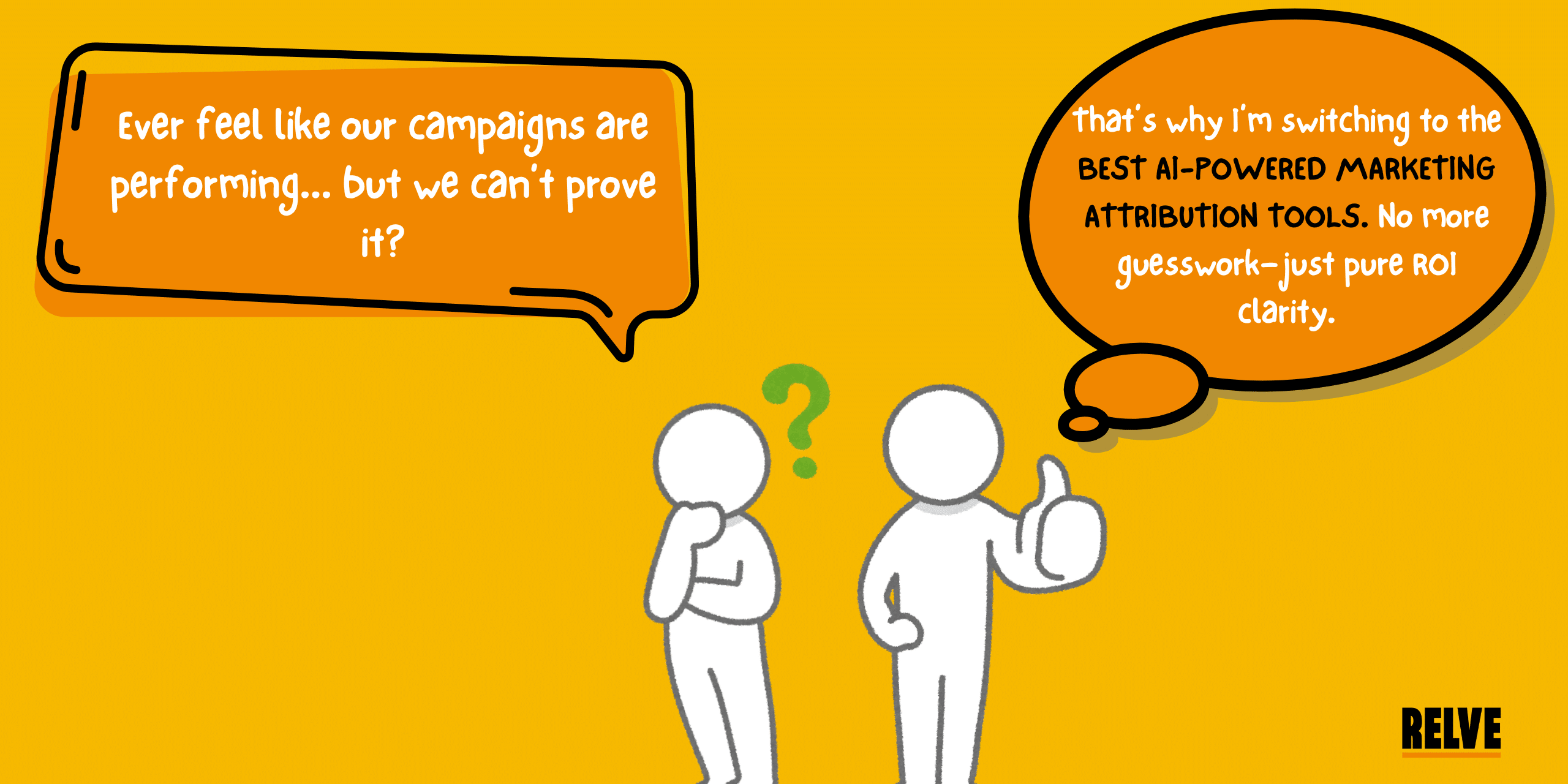With over 52% of marketers citing cross-channel ROI measurement as their biggest challenge, it’s clear that data alone isn’t enough. You need attribution clarity backed by machine intelligence. And for that, you need the best AI-powered marketing attribution tools to scale your campaigns.
Here’s what they don’t tell you. The best AI-powered marketing attribution tools aren’t just glorified dashboards. They’re your always-on analysts – connecting touchpoints, decoding behaviours, and telling you exactly which marketing efforts are driving results.
We’ve identified 10 AI-powered marketing attribution tools worth exploring. They’re great for lean growth teams as well as marketers managing enterprise-level funnels.
Attribution is no longer optional. It’s foundational. Let us take a look.
What Is Marketing Attribution?
In simple terms, marketing attribution is the process of identifying which marketing touchpoints (ads, emails, blogs, social media posts, etc.) lead to a conversion – whether that’s a sale, a signup, or a spike in search traffic. Attribution gives credit where credit is due.
However, today’s users touch multiple platforms before converting, making accurate attribution harder – and more necessary – than ever.
With the rise of AI, marketing attribution tools now use machine learning and predictive modelling to automate insights, remove guesswork, and give you the holy grail: ROI clarity.
Different Models of Marketing Attribution
Marketing attribution might sound like a dry analytics term, but it’s the backbone of storytelling in your campaigns. It tells you who deserves credit for what when a customer finally clicks “Buy Now,” “Subscribe,” or “Get a Demo.”
However, not all stories are told the same way, and that’s where attribution models come in.
Let’s take a look at some common marketing attribution models in use today.
1. First-Touch Attribution
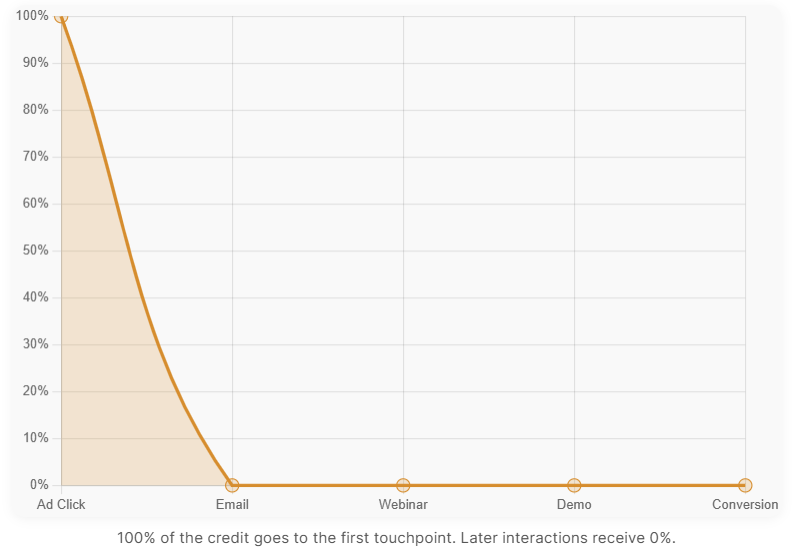
The first-touch attribution model assigns 100% of the credit to the first marketing interaction the user had with your brand – whether it was a Google ad, blog post, or a viral TikTok.
- Pros: Great for measuring awareness campaigns.
- Cons: Ignores all middle and final-stage touchpoints.
Use it when you want to measure the power of top-of-funnel content.
2. Last-Touch Attribution
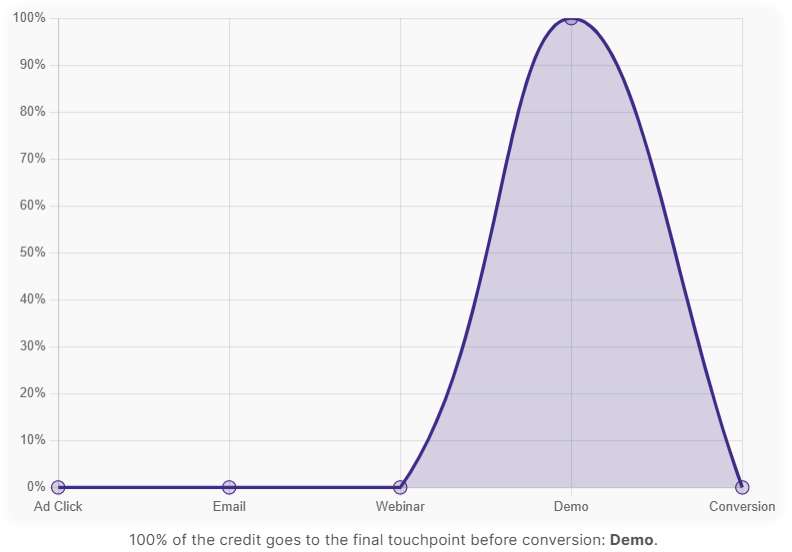
The last-touch attribution model assigns all credit to the last touchpoint before conversion (e.g., email click, retargeting ad).
- Pros: Easy to implement. Favored by sales teams.
- Cons: Neglects the early and mid-funnel grind that nurtured the user.
Use it when you’re optimizing final conversion drivers.
3. Linear Attribution
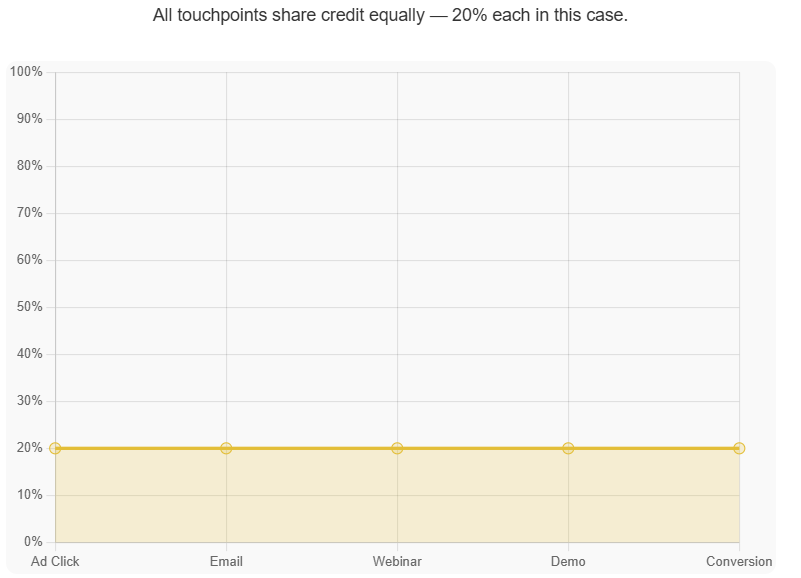
The linear attribution model splits the credit equally across all touchpoints in the user’s journey.
- Pros: Fair and balanced; acknowledges every player.
- Cons: Oversimplifies the weight of key actions (not all touchpoints are equal).
Use it when you want a comprehensive view of the full funnel, without any favorites.
4. Time-Decay Attribution
| Touchpoint | Description | Attribution (%) |
|---|---|---|
| Ad Click | First interaction | 10% |
| Follow-up engagement | 15% | |
| Webinar | Mid-funnel interest | 20% |
| Demo | High-intent, near conversion | 25% |
| Conversion | Final action taken | 30% |
In the time-decay attribution model, credit is assigned to each touchpoint, but recent interactions get more weight than earlier ones.
- Pros: Ideal for longer buyer journeys.
- Cons: First and middle touches get undervalued.
Use it when you’re analyzing long-cycle B2B or high-ticket purchases.
5. U-Shaped (Position-Based) Attribution
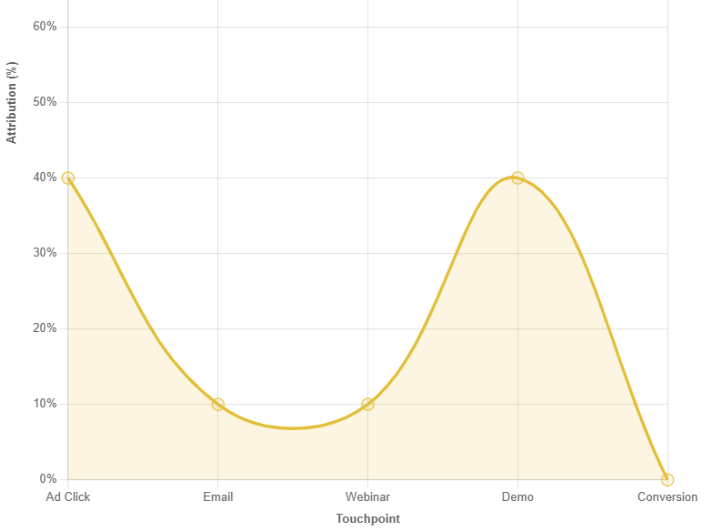
The U-shaped attribution model gives 40% credit to the first and last touchpoints, and distributes the remaining 20% across the middle touchpoints.
- Pros: Captures both awareness and closing impact.
- Cons: Still underweights the messy middle journey.
Use it when you’re nurturing leads over multiple stages.
6. W-Shaped Attribution
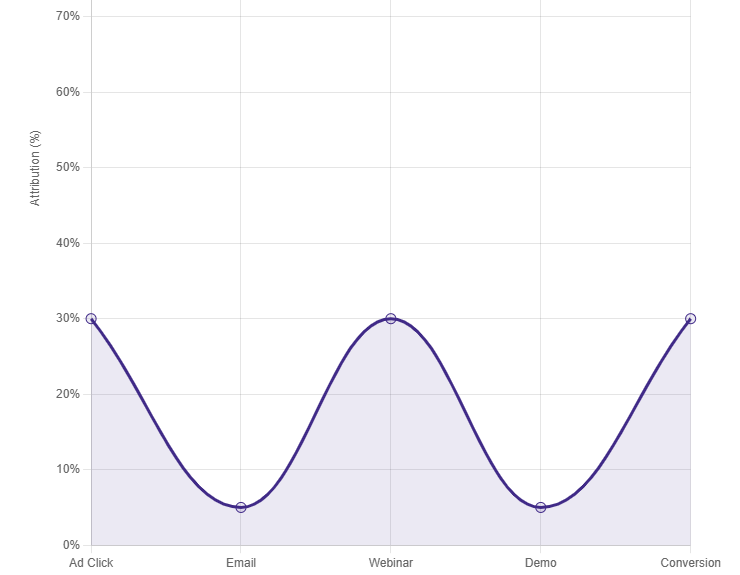
The W-shaped attribution model focuses on three key moments:
- First touch
- Lead conversion
- Final interaction
Each receives 30% credit, with the remaining amount distributed accordingly.
- Pros: More nuanced for lead gen campaigns.
- Cons: Still limited in tracking multi-faceted journeys.
Use it when you want to track marketing-assisted lead journeys in depth.
7. Data-Driven Attribution (AI-Powered)
A data-driven attribution model utilizes machine learning to analyze historical user journeys and assigns credit based on what has been proven to drive conversions.
- Pros: Highly accurate. Self-learning. Scales across complex data.
- Cons: Requires sufficient volume and quality of data. Sometimes a black box.
Use it when you want the most innovative and scalable approach and have the data to support it.
The 10 Best AI-Powered Marketing Attribution Tools for 2025
We’ve compiled a list of the best AI marketing attribution tools in the market today.
The tools here have been showcased based on their:
- AI capabilities
- Attribution modeling flexibility
- Use case suitability (B2B, SaaS, eCommerce, mobile, etc.)
- Ease of use and integrations
Learn which one suits your requirements:
| Tool | Description |
| Usermaven | Privacy-friendly, real-time attribution with retroactive tracking. |
| Ruler Analytics | Revenue attribution + CRM syncing for ROI clarity. |
| HubSpot Marketing Hub | All-in-one automation with native attribution models. |
| Mixpanel | Product + campaign analytics with cohort insights. |
| Coupler.io | No-code automation + analytics dashboard builder. |
| LeadsRx | Radio-to-digital multi-touch attribution powerhouse. |
| Google Analytics | Freemium attribution with new GA4 features. |
| Heap | Auto-capture user data with predictive analysis. |
| Segment | Customer data platform with attribution APIs. |
| Singular | Mobile marketing attribution + fraud prevention. |
1. Usermaven
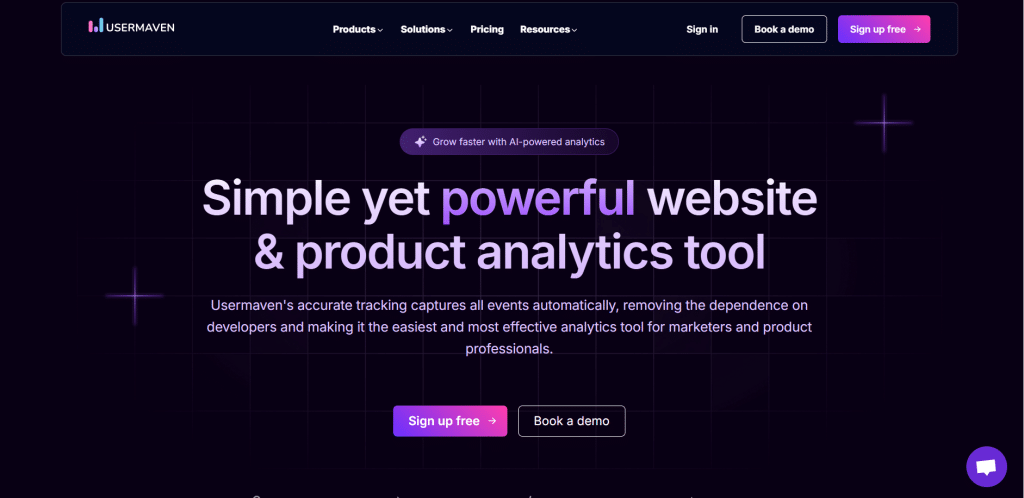
Usermaven is a lightweight, yet mighty attribution tool built for fast-moving teams who want accurate funnel data without complex setups.
Notable AI Features:
- AI-based user journey tracking with retroactive modeling
- Smart goals setup without coding
- Behavior-based attribution suggestions
Ideal for: Lean teams, product-led growth (PLG) businesses, privacy-conscious marketers
Why marketers love it: No cookies, no problem. You gain full visibility, even in cookieless environments, with machine-learning-powered funnel insights.
2. Ruler Analytics
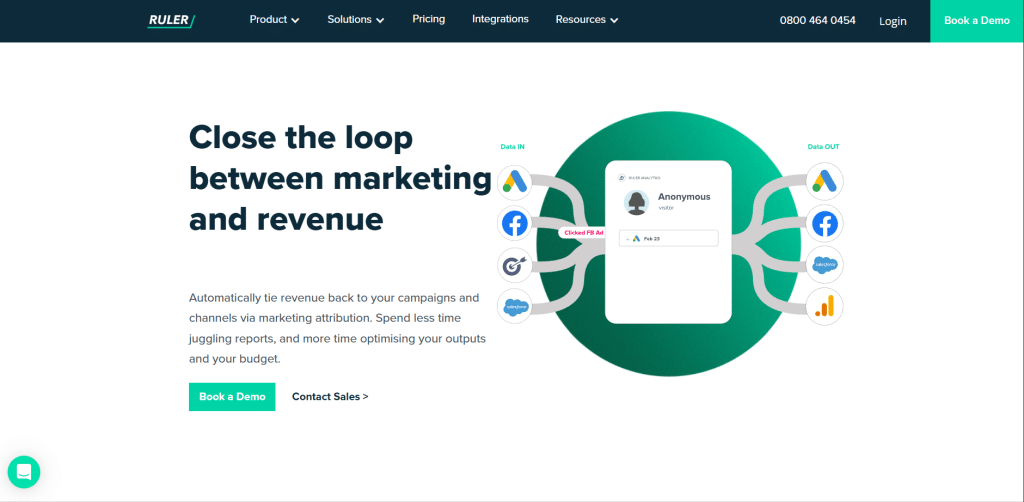
Ruler connects your first click to a closed deal, stitching data between marketing platforms and CRMs.
Notable AI Features:
- AI-modeled revenue attribution (not just lead attribution)
- Call tracking AI for spoken-word attribution
- Predictive channel scoring for pipeline contribution
Ideal for: Lean teams, product-led growth (PLG) businesses, privacy-conscious marketers
Why marketers love it: Ruler Analytics makes it easier to provide clarity on marketing’s ROI to the CFO.
3. HubSpot Marketing Hub
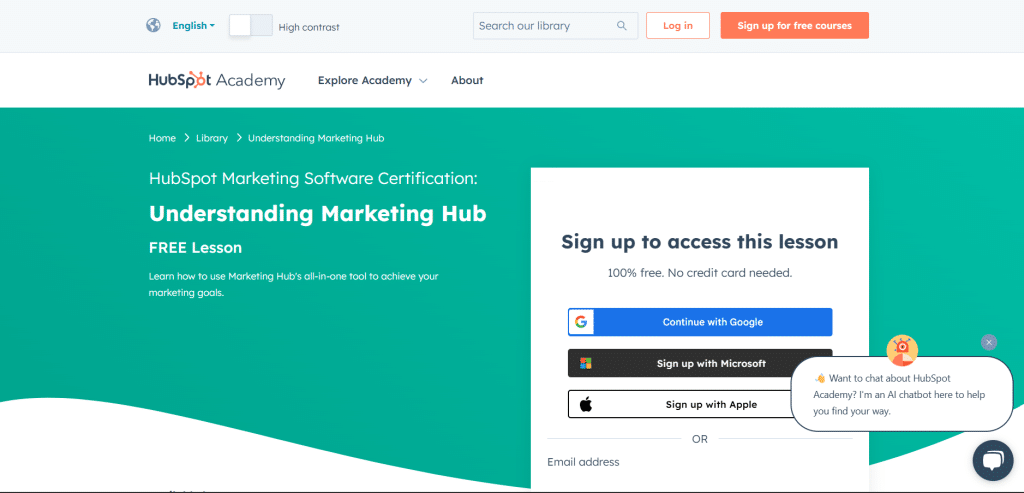
HubSpot doesn’t just collect data – it provides actionable attribution insights built directly into every campaign tool.
Notable AI Features:
- AI-powered lead scoring + attribution model selection
- Smart content generation tied to performance metrics
- Automated reporting for sales/marketing alignment
Ideal for: All-in-one marketing teams, SMBs, inbound marketers
Why marketers love it: One login, one interface, full-funnel insights. Plus a chatbot that helps.
4. Mixpanel
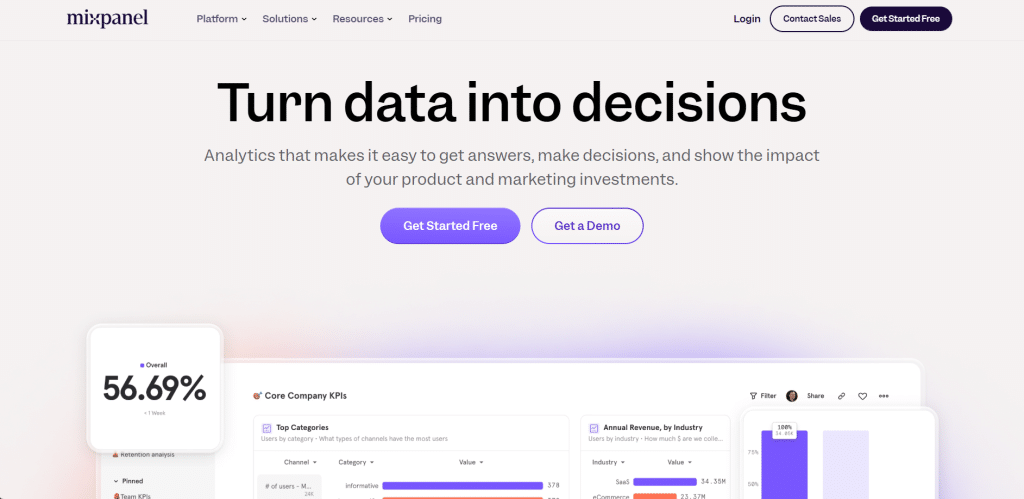
Mixpanel merges product analytics with campaign attribution, giving you insight into both behavior and acquisition.
Notable AI Features:
- Predictive user flows + drop-off detection
- Dynamic cohorts based on behavior trends
- In-tool experimentation recommendations
Why marketers love it: Because not all conversions happen on landing pages – some happen inside your app.
5. Coupler.io
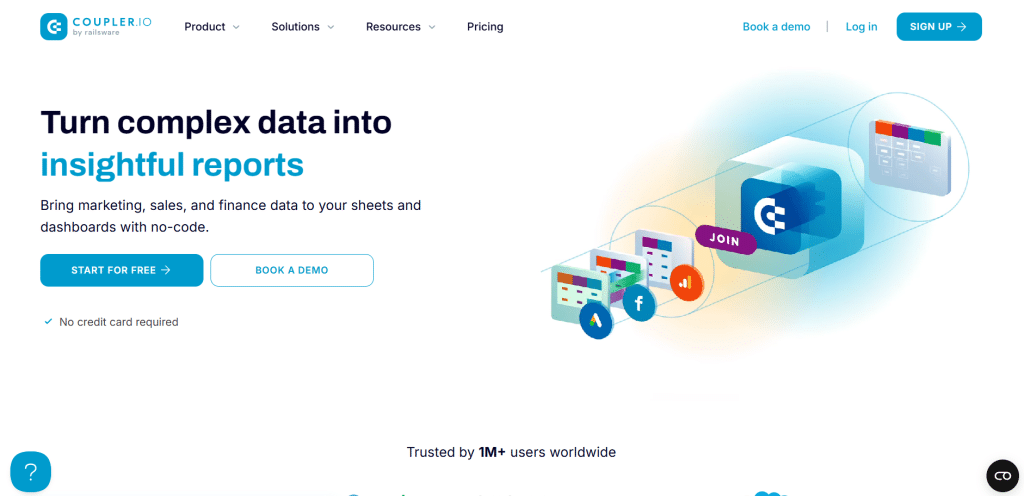
Coupler brings together data automation + no-code analytics in a way that makes even Excel look great.
Notable AI Features:
- Auto-generated marketing dashboards
- Predictive data connectors with smart refresh intervals
- Custom metric modeling using GPT-powered builders
Ideal for: Spreadsheet lovers, growth hackers, DIY data teams
Why marketers love it: Plug, play, and analyze – without needing to ask your developers for help.
6. LeadsRx
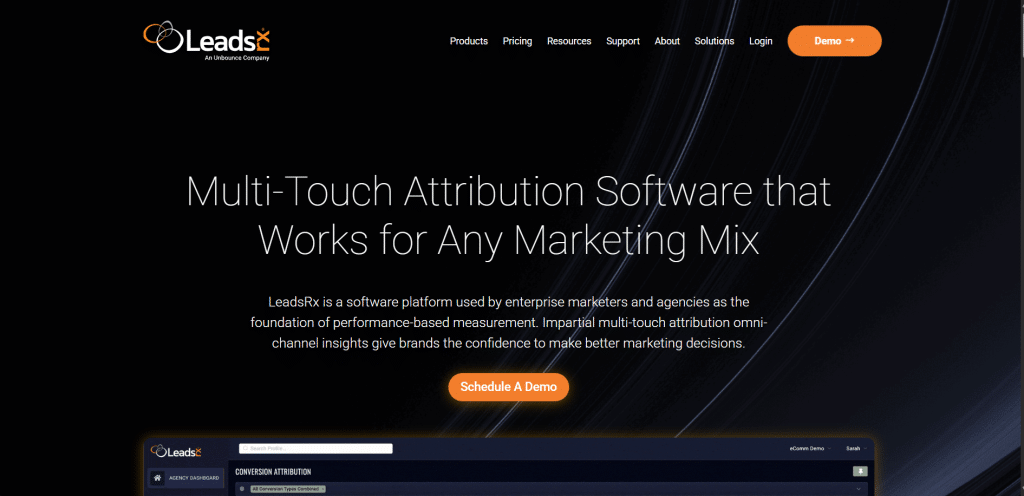
LeadsRx brings AI-powered attribution to everything, including offline media.
Notable AI Features:
- Identity graphs to stitch cross-device user journeys
- AI-driven “lift analysis” for campaign adjustments
- Real-time performance scorecards across all touchpoints
Ideal for: Omnichannel advertisers, big-budget marketers, podcast/radio advertisers
Why marketers love it: Because you can track radio + Google + TikTok + SMS + podcasts, all from one place.
7. Google Analytics (GA4)
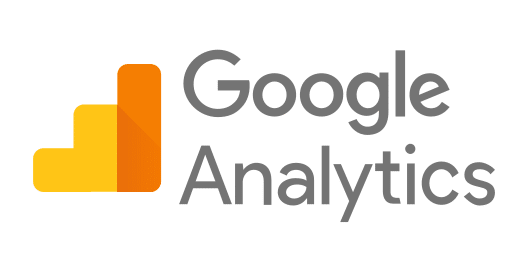
GA4 isn’t just the successor to Universal Analytics – it’s now loaded with machine learning juice.
Notable AI Features:
- Smart attribution modeling (auto-applied data-driven)
- Predictive metrics: Purchase probability, churn risk
- Anomaly detection alerts
Ideal for: Almost everyone – especially startups and SMBs
Why marketers love it: It’s free. It’s powerful. And it plays well with nearly every tool you already use.
8. Heap
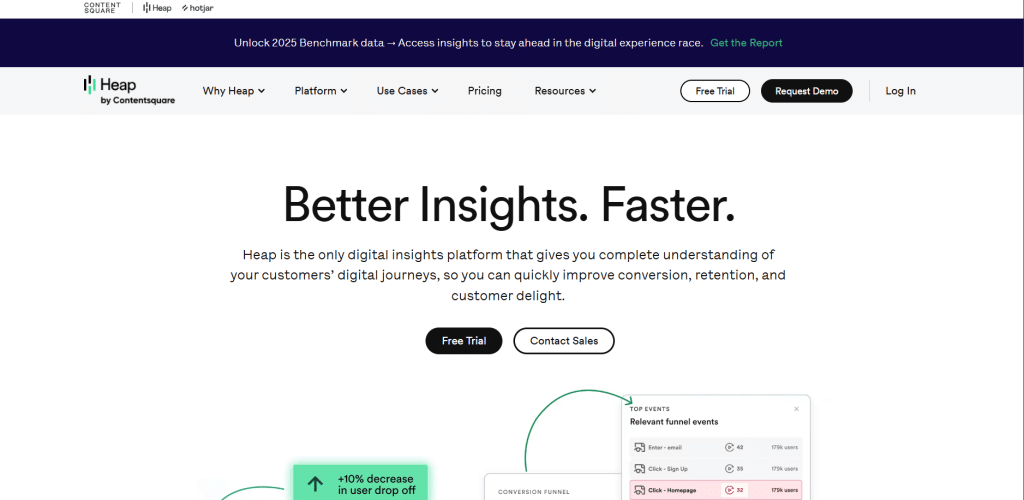
Heap auto-tracks everything users do on your site or app. Every click, scroll, and rage quit.
Notable AI Features:
- AI suggestions for high-dropoff areas
- Funnel intelligence to improve UX
- Contextual tagging and auto-enrichment
Ideal for: Product teams, growth teams, behavioral marketers
Why marketers love it: It’s like having a full-time analyst who never sleeps.
9. Segment
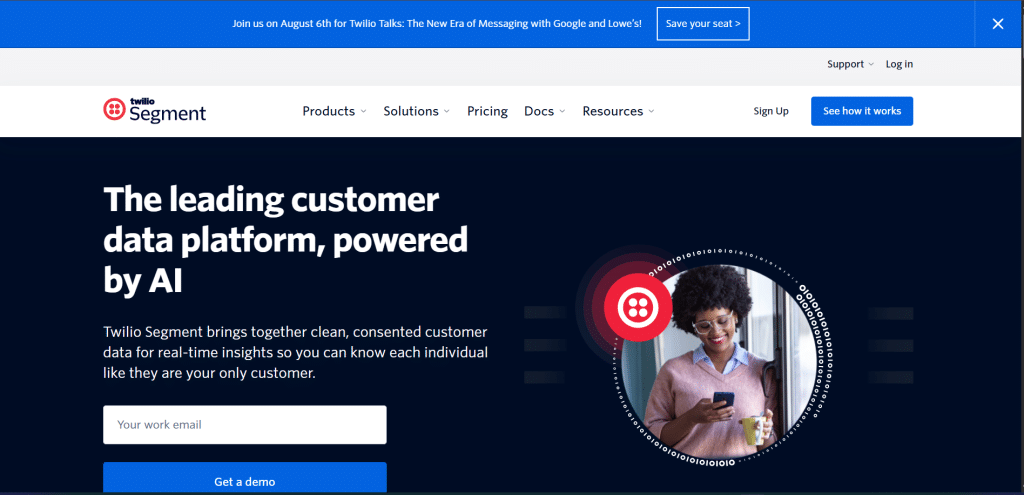
Segment isn’t a traditional attribution tool – it’s the data backbone that powers AI attribution via integrations.
Notable AI Features:
- Event-based AI tagging for attribution streams
- Predictive segmentation and personalization
- Real-time user profile enrichment
Ideal for: Data-savvy teams, startups with growing stacks.
Why marketers love it: You can build your own attribution model with the tools you love – thanks to Segment’s composability.
10. Singular
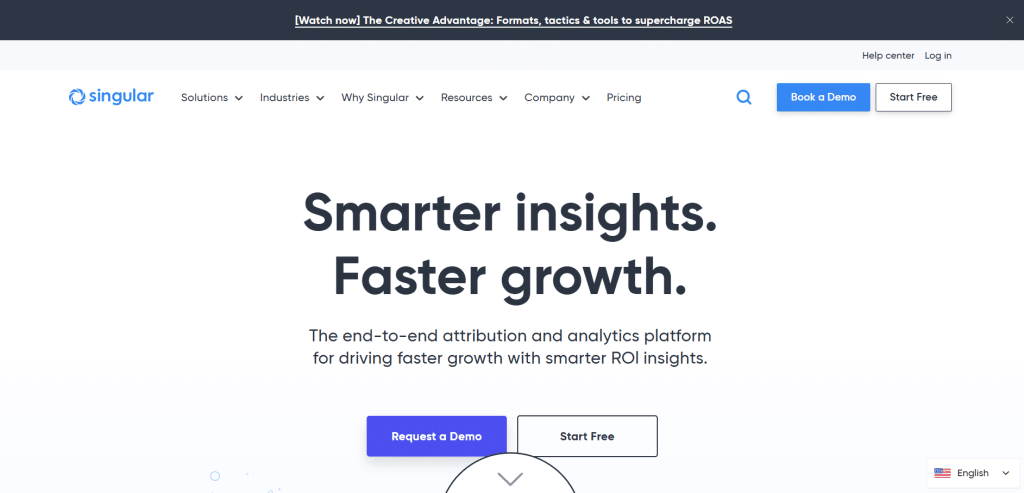
Singular is built for mobile-first attribution and budget optimization.
Notable AI Features:
- Fraud detection using pattern-based learning
- LTV prediction for ad networks
- Smart bidding optimization
Ideal for: Mobile marketers, gaming apps, ad-driven apps
Why marketers love it: It’s a full-stack mobile growth platform – not just a tracker.
Benefits of Using Marketing Attribution Tools
The best AI-powered marketing attribution tool for your business offers numerous competitive benefits. Here are some of them:
1. Better Decision-Making
Know exactly which campaigns drive conversions, so you stop wasting money on what doesn’t work.
2. Improved ROI
By accurately allocating budgets based on actual performance, you can scale winning channels more efficiently.
3. Deeper Customer Insights
Understand complete customer journeys—not just the first or last click.
4. Predictive Analytics with AI
Tools like Heap and GA4 now forecast behaviors, helping you act before a customer churns.
5. Automation & Time Savings
No more manual tagging or guessing. Let the AI crunch numbers while you sip your coffee.
6. Privacy-Friendly Tracking
Many tools offer cookieless and GDPR-compliant tracking, giving peace of mind in a privacy-first world.
Conclusion
Choosing the best AI-powered marketing attribution tools is not just about features – it’s about alignment with your team’s workflows, goals, and growth stage. They are more about making more intelligent decisions that drive business growth.
With the right tool in your stack, you won’t just see the whole picture – you’ll see the future.
